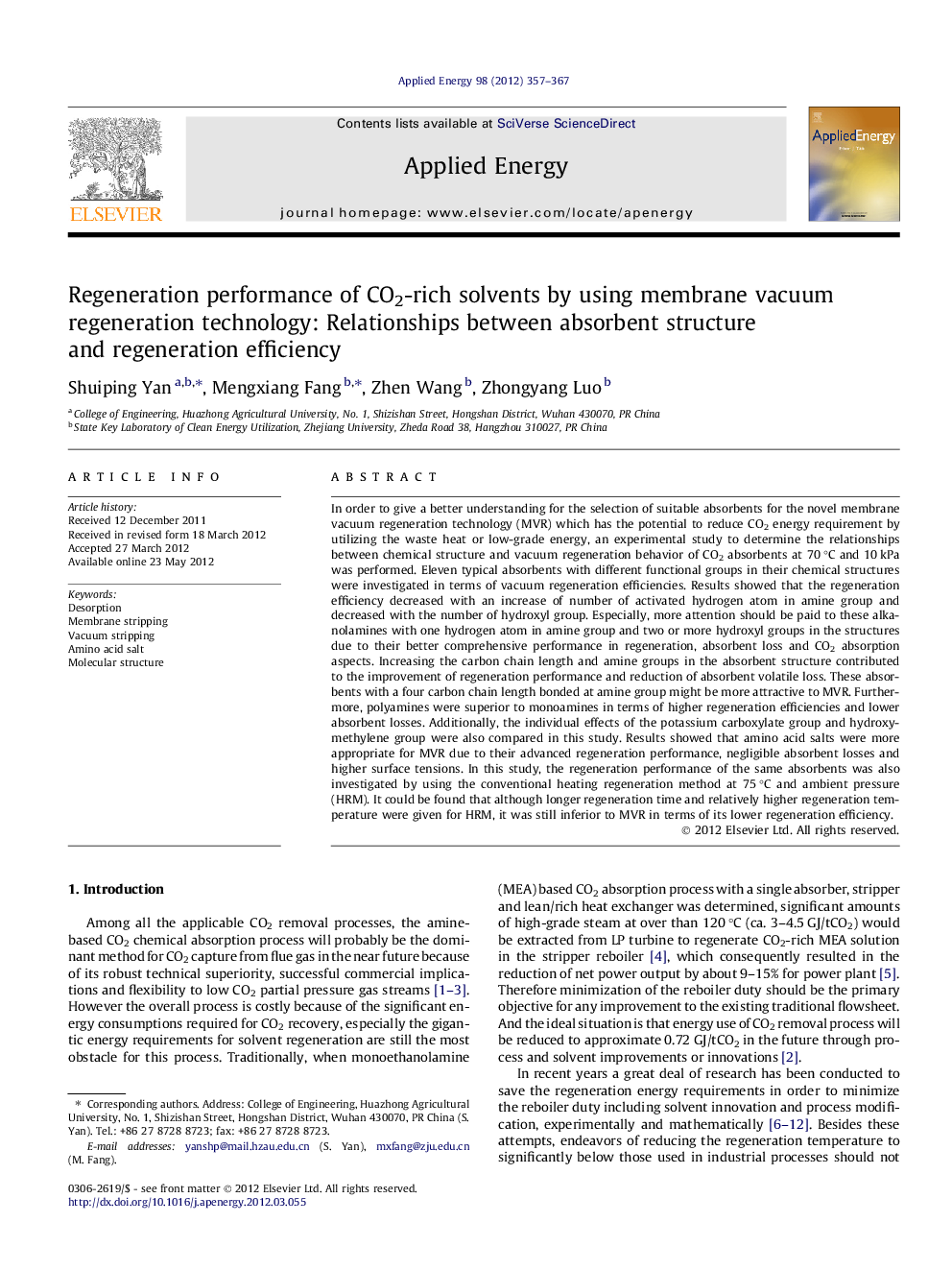| Article ID | Journal | Published Year | Pages | File Type |
|---|---|---|---|---|
| 243220 | Applied Energy | 2012 | 11 Pages |
In order to give a better understanding for the selection of suitable absorbents for the novel membrane vacuum regeneration technology (MVR) which has the potential to reduce CO2 energy requirement by utilizing the waste heat or low-grade energy, an experimental study to determine the relationships between chemical structure and vacuum regeneration behavior of CO2 absorbents at 70 °C and 10 kPa was performed. Eleven typical absorbents with different functional groups in their chemical structures were investigated in terms of vacuum regeneration efficiencies. Results showed that the regeneration efficiency decreased with an increase of number of activated hydrogen atom in amine group and decreased with the number of hydroxyl group. Especially, more attention should be paid to these alkanolamines with one hydrogen atom in amine group and two or more hydroxyl groups in the structures due to their better comprehensive performance in regeneration, absorbent loss and CO2 absorption aspects. Increasing the carbon chain length and amine groups in the absorbent structure contributed to the improvement of regeneration performance and reduction of absorbent volatile loss. These absorbents with a four carbon chain length bonded at amine group might be more attractive to MVR. Furthermore, polyamines were superior to monoamines in terms of higher regeneration efficiencies and lower absorbent losses. Additionally, the individual effects of the potassium carboxylate group and hydroxymethylene group were also compared in this study. Results showed that amino acid salts were more appropriate for MVR due to their advanced regeneration performance, negligible absorbent losses and higher surface tensions. In this study, the regeneration performance of the same absorbents was also investigated by using the conventional heating regeneration method at 75 °C and ambient pressure (HRM). It could be found that although longer regeneration time and relatively higher regeneration temperature were given for HRM, it was still inferior to MVR in terms of its lower regeneration efficiency.
► MVR may be viable to successfully use less valuable heat to replace high grade steam. ► Increasing OH and amine groups will increase the regeneration efficiency. ► Absorbents with a four carbon chain length will be more attractive to MVR. ► Amino acid salts will be more appropriate for MVR. ► HRM conducted at ambient pressure and low temperature is inferior to MVR.
